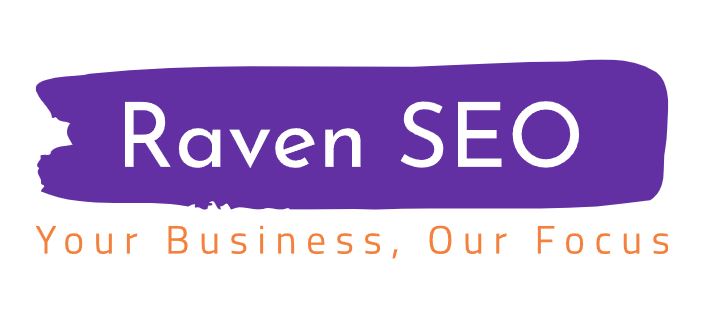Search Engine Optimization (SEO) can feel like a whole different language at times. But don’t worry, you don’t need to be a digital marketing expert to understand the basics. In this post, we’ll break down the essential SEO terms that every website owner should know, helping you make sense of what it takes to get your site noticed on Google.
On-Page SEO
On-page SEO refers to the optimizations you make directly to the content and structure of your website pages. This is essential for helping search engines understand what your site is about and rank it accordingly. Here are some key on-page SEO elements:
- Keywords: These are the words and phrases people use to search for information online. By strategically incorporating relevant keywords into your website’s content (titles, headings, body text), you signal to search engines like Google what your pages are about. This helps your site appear in search results when users search for those terms. Need help finding the right keywords? Check out our guide to choosing the right keywords.
- Meta Tags: Meta tags are snippets of HTML code that provide information about a web page to search engines. The most important meta tags for SEO are the title tag (the blue clickable headline in search results) and the meta description (the short summary that appears below the title). Crafting compelling meta tags that accurately reflect your page content and include relevant keywords can improve your click-through rate from search results pages.
- Header Tags: These are HTML tags (H1, H2, H3, etc.) that structure your content and make it easier for both users and search engines to read. The H1 tag is typically used for the main title of a page, while H2 and H3 tags are used for subheadings. Using header tags in a logical hierarchy helps search engines understand the structure of your content and identify the most important topics.
By optimizing these on-page SEO elements, you can make your website more attractive to both users and search engines, improving your visibility and driving more organic traffic to your site.
Off-Page SEO
Off-page SEO encompasses a variety of tactics that happen outside of your website but still have a significant impact on your search engine rankings. Think of it as building your website’s reputation within the vast online landscape.
- Backlinks: The Currency of Authority Backlinks are links from other websites that point to your pages. Search engines interpret these links as “votes of confidence,” signaling that your content is valuable and relevant. The more high-quality backlinks you have, the greater your site’s authority, which can lead to higher rankings in search results.
- Social Signals: Amplify Your Message While not a direct ranking factor, social signals like likes, shares, and comments on platforms like Facebook, Twitter, and LinkedIn can indirectly boost your SEO efforts. These social interactions increase brand visibility, drive traffic to your website, and potentially attract more backlinks. Learn more about what social media marketing would look like.
By focusing on off-page SEO strategies, you’ll strengthen your website’s authority and credibility in the eyes of search engines and users alike, ultimately leading to increased organic traffic and improved search rankings.
Technical SEO
Technical SEO focuses on the behind-the-scenes elements that influence how search engines crawl, index, and rank your website. A technically sound website is essential for optimal visibility in search results and a positive user experience.
- Crawling and Indexing: Search engines like Google use automated bots (also known as spiders or crawlers) to discover and analyze web pages. Proper website structure and code ensure these bots can easily access and understand your content. If your site isn’t properly crawled and indexed, it won’t show up in search results.
- Page Speed: How fast your website loads is a crucial ranking factor. Users expect quick loading times, and Google penalizes slow sites. Factors influencing page speed include image size, code efficiency, and server response time. Our web development team specializes in optimizing website performance for faster loading and improved user experience.
- Mobile-Friendliness: In today’s mobile-first world, most users access websites from their smartphones and tablets. A mobile-friendly website automatically adjusts to different screen sizes, ensuring optimal viewing and navigation on all devices. This is a crucial ranking factor for Google, and it also enhances the user experience, encouraging visitors to stay on your site longer.
By addressing these technical SEO aspects, you create a website that’s both user-friendly and search engine-friendly, maximizing your chances of attracting and retaining visitors from organic search results.
Local SEO
Local SEO is an essential strategy for businesses targeting customers within a specific geographic area, like Baltimore. It involves a multi-faceted approach to increase your visibility in local search results, helping you attract customers who are physically near your business.
- Google Business Profile (GBP): This free tool from Google is the cornerstone of local SEO. It allows you to manage how your business appears in Google Search and Maps, providing essential information like your address, hours, and contact details. Optimizing your Google Business Profile is crucial for showing up in local searches and attracting potential customers.
- Local Citations: These are online mentions of your business’s name, address, and phone number (NAP) on other websites and directories. Citations help search engines verify the legitimacy of your business and understand where you’re located, thus boosting your local authority and ranking.
- Local Keywords: Incorporating location-specific keywords into your website’s content and metadata is vital for local SEO. Think about phrases that potential customers in your area might use when searching for your products or services (e.g., “best coffee shop in Baltimore,” “personal trainer in Rossville”).
By focusing on these local SEO tactics, you can increase your visibility in relevant search results, attract more foot traffic, and ultimately drive more sales for your Baltimore-based business.
SEO Metrics
These are essential data points to track your SEO progress:
- Organic Traffic: Visitors who find your website through unpaid search results (e.g., a Google search).
- Keyword Rankings: The positions your website holds in search results for specific keywords.
- Bounce Rate: The percentage of visitors who leave your site after viewing only one page.
- Conversion Rate: The percentage of visitors who take a desired action (e.g., purchase, sign up).
By understanding these core SEO terms, you’ll be better equipped to assess your website’s performance, develop effective strategies, and communicate with SEO professionals. Remember, knowledge is power!
Want to dive deeper into SEO for businesses in Baltimore? Contact Raven SEO today for a free consultation!




